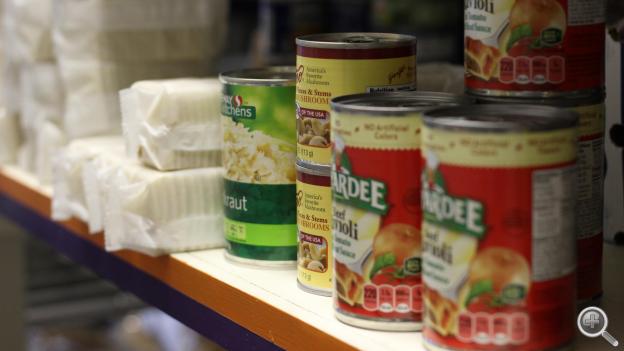Harvest Public Media: Rural Americans Are Now The Largest Slice Of Federal Food Aid Recipients
Howdy, and Wow!
Click on the highlighted link below to hear this important story. It makes clear that rural people are using food assistance programs at a faster rate than are their urban cousins. Everyone, especially rural people, should stop to wonder why that might be. When the world’s most productive and efficient food producing farmers have to rely on federal food assistance programs and off farm jobs to feed their families, something is very, very wrong.
What could be the cause for the increase in rural poverty, rural hunger, and rural depopulation? I suspect it may have something to do with our nation’s farm and trade policies that produces a permanent surplus of production that causes domestic commodity prices to collapse, including the current five years in a row of below the costs of production commodity prices.
The agribusiness driven legalized looting of rural America continues. The grain traders are buying all the grain and oil seeds for less than it costs the farmers to produce them, which is the primary but hidden subsidy in federal farm policy. Because of the structure of federal policy, the real subsidy beneficiaries get no public credit or pushback for the annual windfall of value they get at the farmers expense.
Our nation must develop a focus on fair and appropriate value for the folks who do the work, take the risk, and produce the food and fiber. Maybe someday, our farmers will figure out that: “A loss X greater volume = a greater loss. As my kids used to tell me, “Duh!”
All the best,
John K. Hansen, President
Nebraska Farmers Union
1305 Plum Street, Lincoln, NE 68502
402-476-8815 Office 402-476-8859 Fax
402-476-8608 Home 402-580-8815 Cell
john@nebraskafarmersunion.org
www.nebraskafarmersunion.org

Shelves are stocked with goods at a pantry in Colorado. (File photo by Esther Honig, Harvest Public Media)
by Peggy Lowe for Harvest Public Media | October 29, 2018
Food-aid programs were made part of the federal farm bill to attract urban legislators. The thinking was they would support rural interests if they could get help where food stamp use was highest, in the inner cities. But that need has moved.
On a busy football Saturday, fans on both sides of the Iowa-Nebraska line streamed into a tiny grocery store to pick up hamburger, soda and chips.
Store manager Nick Johnson, a third-generation store owner in far southwest Iowa, has long had a front-row seat to the local economy. Times have been tough since the recession, with lots of people losing their manufacturing jobs, though he says that it looks like some of those are coming back.
And similar to the rest of the country, farm income is down thanks to low crop prices.
More than 38,000 people in this congressional district receive assistance from the Supplemental Nutrition Assistance Program, or SNAP, what used to be called food stamps. Most are white and 40 percent live under the poverty level.
 Since the 1970s, congressional leaders have placed food programs in the farm bill to attract votes from cities, where food stamp use was highest. The hope was that rural and urban lawmakers would come together to get the big bill passed.
Since the 1970s, congressional leaders have placed food programs in the farm bill to attract votes from cities, where food stamp use was highest. The hope was that rural and urban lawmakers would come together to get the big bill passed.
But the SNAP map has shifted. U.S. Department of Agriculture data shows that since 2012, SNAP participation is highest among households in rural areas and small towns under 2,500 people.
“It wasn’t shocking or surprising,” said Ellen Vollinger, legal director of the Food Research & Action Center, or FRAC, “when you think about the degree to which SNAP is related to people being poor.”
FRAC analyzed the USDA data and found that nationally, 16 percent of households in rural areas use SNAP versus 13 percent in urban areas. The population of older people is larger in rural areas, which Vollinger said is driving the increase.
“The data, if anything, probably suggests that there could be an even greater reach for SNAP in rural areas if it was doing a stronger job of reaching more of the elderly who are, in fact, eligible but not participating,” she said.
Other people in rural areas who need SNAP are low-wage workers who just don’t make enough or don’t get enough hours at work, Vollinger said, and many recipients are families with children.
About a fifth of Johnson’s store’s annual revenue comes from SNAP, he said, which is about average.
“There’s a lot of farmers in this community,” Johnson said. “There’s a lot of people who have their own businesses, so they try to do the best they can.”
David Procter of the Rural Grocery Initiative at Kansas State University surveyed Kansas rural grocers to see how much business comes from SNAP and another major federal nutrition program, Women, Infants and Children, or WIC.
“We get different percentages from different owners,” he said, “but anywhere from say 10 percent up to about 25 percent of their sales they tell us come from those federal food assistance programs.”
The revenue that federal food aid provides for grocery stores is also helping fuel small town economies, Procter said, providing work for the electricians, carpenters and refrigerator repairers the groceries use.
USDA data shows that every dollar spent in SNAP generates up to $1.80 in economic activity in that area.
The other big winner from SNAP dollars: chain stores that cater to rural areas, like Dollar General. The USDA reports that in 2017, big-box stores like Walmart took in more than half of the $63 billion set aside for SNAP.
Peggy Lowe is a contributor to Harvest Public Media and based at KCUR in Kansas City, Missouri.